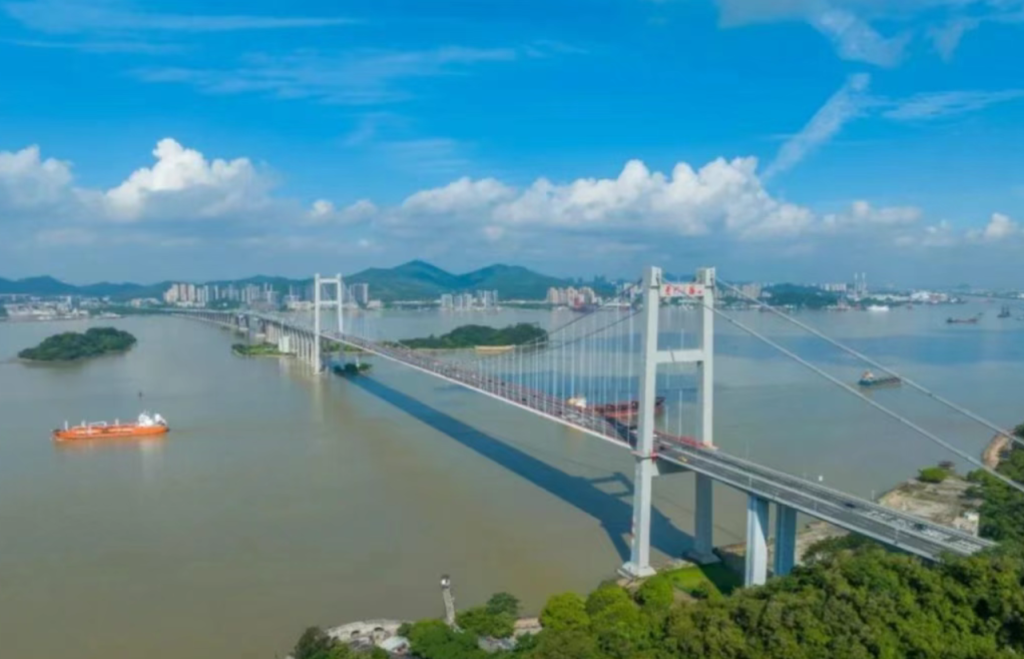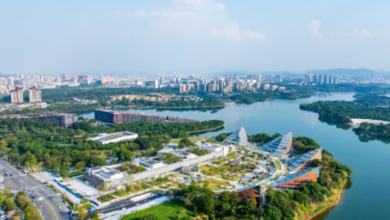Dongguan Binhaiwan and Guangzhou Nansha: A Model of Collaborative Development in the Greater Bay Area


Introduction: A Strategic Partnership in the Making
When I first visited Dongguan Binhaiwan and Guangzhou Nansha, I was struck by their complementary strengths—Binhaiwan’s industrial prowess and Nansha’s cutting-edge research ecosystem. Their recent collaboration agreement, signed in July 2025, marks a transformative step toward integrated regional development. This partnership isn’t just about local growth; it’s a blueprint for how cities in the Guangdong-Hong Kong-Macau Greater Bay Area (GBA) can synergize to boost innovation, infrastructure, and quality of life.
The agreement focuses on seven key areas: planning cohesion, industrial synergy, tech innovation, infrastructure, social welfare, credit systems, and policy reform. For businesses and residents, this means smoother cross-regional logistics, shared high-tech resources, and even a proposed extension of Guangzhou Metro Line 22 to Binhaiwan Station. Let’s dive into the details.
Collaborative Research and Industrial Upgrading
One of the most exciting aspects of this partnership is the joint push for high-end innovation platforms. Binhaiwan and Nansha plan to co-develop major projects like:
- Nansha Science City and the Chinese Academy of Sciences’ Pearl Science Park (Nansha’s flagship research hubs).
- Binhaiwan’s University Town, featuring the upcoming Great Bay University campus and a university science park.
In my experience visiting similar clusters in Shenzhen, such integrated ecosystems accelerate R&D commercialization. Here, companies from both zones can access shared labs, equipment, and data—reducing costs and spurring breakthroughs in fields like AI, biotech, and smart manufacturing.
Industry-Specific Alliances
The two districts are aligning their industrial strengths:
- Nansha’s edge: Autonomous driving, life sciences, and fintech (home to the Hong Kong University of Science and Technology’s Guangzhou campus).
- Binhaiwan’s base: Electronics, advanced equipment, and new energy vehicles (think Huawei’s R&D centers).
A local entrepreneur I spoke with highlighted how this avoids redundant competition. For instance, a Nansha-based AI startup can partner with Binhaiwan’s hardware manufacturers to prototype smart sensors.
2. Infrastructure Integration: Bridging the Pearl River Delta
Transportation: From “1-Hour GBA” to Seamless Connectivity
The infrastructure plans are game-changers:
- Guangzhou Metro Line 22 Extension: Slated to connect Nansha’s Jiaomen station to Binhaiwan, cutting travel time to under 40 minutes. (I’d recommend future residents use this for weekend trips—Nansha’s wetlands meet Binhaiwan’s seaside promenades!)
- Deep Jiang Railway: A high-speed link between Shenzhen, Dongguan, and Guangzhou, with a stop in Binhaiwan.
- Marine Routes: New ferry lines between Binhaiwan’s New Hong Kong-Macau Pier and Nansha’s ports, easing cargo and passenger flow.
Digital Infrastructure
Both zones are investing in 5G towers, IoT networks, and industrial internet systems to support smart factories and logistics. A Nansha official shared that cross-district data sharing will optimize supply chains—e.g., a Binhaiwan exporter can track shipments via Nansha’s blockchain-enabled customs system.
3. Livability and Policy: Building a Cross-Border Community
“Cross-Domain Services” for Residents
The partnership prioritizes citizen-centric policies:
- Shared Healthcare and Education: Plans include joint training for medics and teacher exchanges. Nansha’s Sun Yat-sen University Cancer Center may expand services to Binhaiwan.
- Tourism Packages: A proposed “Weekend Escape” route combines Nansha’s Wanqingsha Wetlands with Binhaiwan’s Opium War Museum and Humen Fort. (I tried a similar heritage trail last year—the juxtaposition of history and nature is unforgettable.)
Credit System Pilot
As Guangdong’s first cross-district credit cooperation试点, the duo will:
- Align corporate credit ratings, so a trustworthy Nansha firm can fast-track permits in Binhaiwan.
- Launch “Credit + Tourism” perks—e.g., no-deposit hotel bookings for highly rated residents.
Conclusion: A Template for the Greater Bay Area
From streamlined commutes to collaborative labs, Binhaiwan-Nansha exemplifies the GBA’s “golden inner bay” vision. For investors, this means access to dual supply chains; for travelers, richer experiences. As a frequent visitor, I’m eager to see how this model inspires similar tie-ups—perhaps Zhongshan-Shenzhen next?
Keyword Recap:
- Dongguan Binhaiwan Guangzhou Nansha collaboration
- Greater Bay Area infrastructure
- Guangzhou Metro Line 22 extension
- Pearl River Delta credit system
Pro Tip: Watch for the 2026 “15th Five-Year Plan”—it may cement these projects into broader national strategies.





